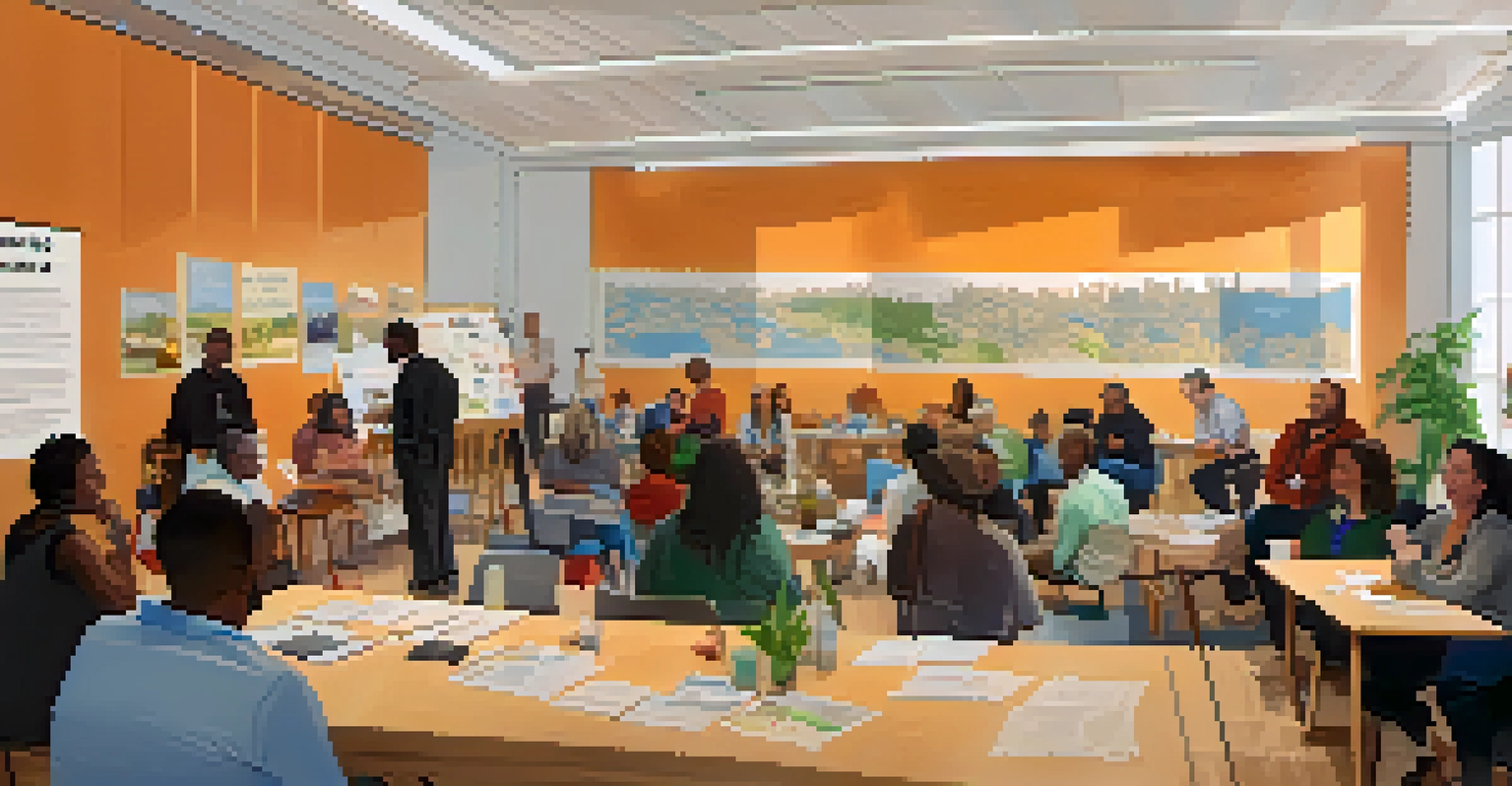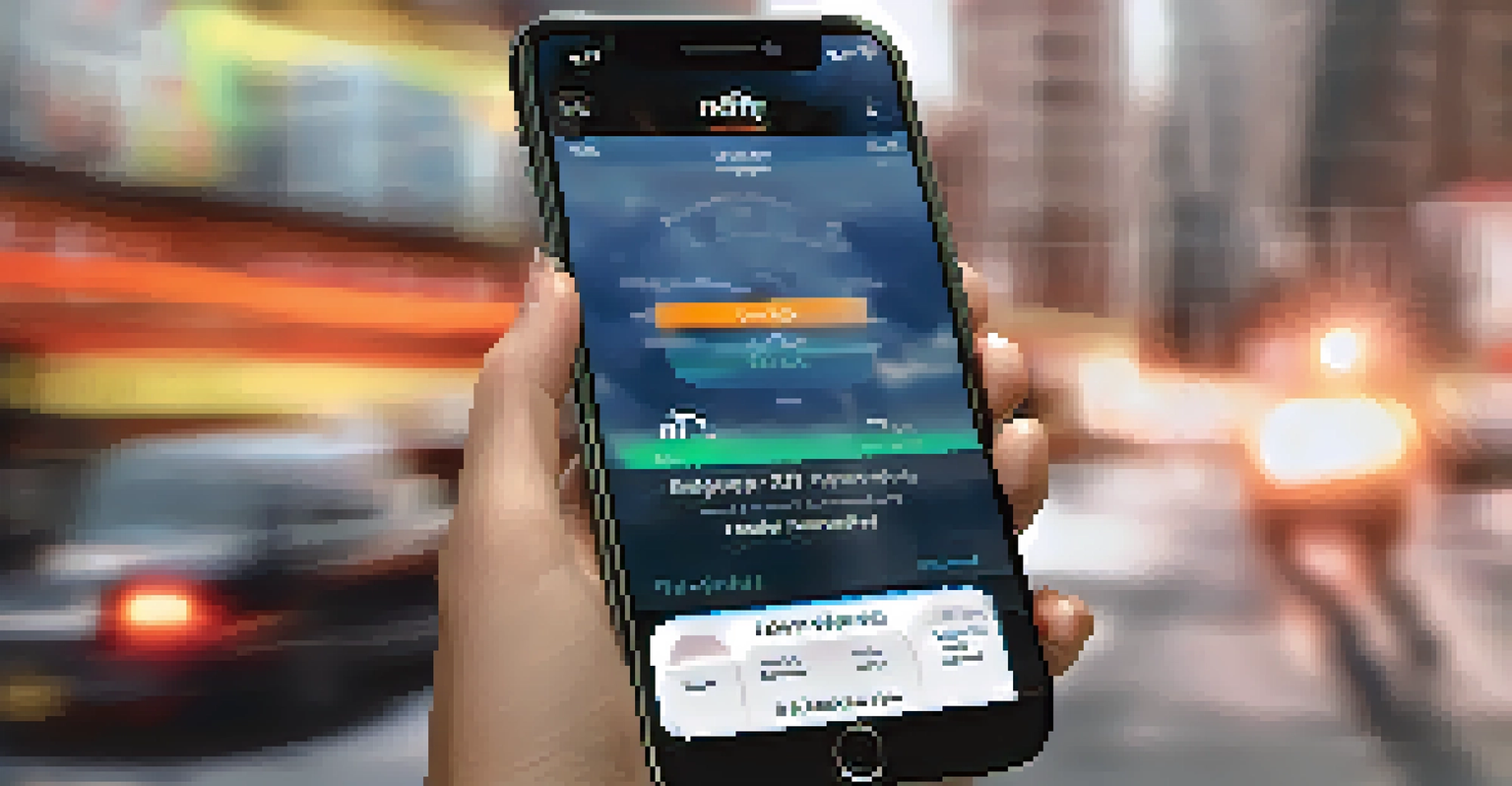Emergency Preparedness: NYC's Strategy for Community Resilience

Understanding Emergency Preparedness in NYC
Emergency preparedness is crucial for any urban setting, especially in a bustling metropolis like New York City. With its diverse population and unique challenges, NYC is constantly working to enhance its strategies for dealing with emergencies. This involves planning for natural disasters, health crises, and even terrorist threats, ensuring that all communities are equipped to respond effectively.
By failing to prepare, you are preparing to fail.
The city's emergency management framework aims to protect its residents by fostering a culture of preparedness. This means not only having plans in place but also engaging the community to understand their roles in these plans. By building awareness and knowledge, New Yorkers can feel more empowered and less anxious about potential emergencies.
As the city faces increasing threats from climate change and other factors, it’s critical that emergency preparedness evolves. NYC's strategy is an ongoing process that adapts to new challenges, ensuring that every resident has the resources and information they need to stay safe during unexpected events.
Community Engagement: The Heart of Preparedness
Community engagement is a cornerstone of NYC’s emergency preparedness strategy. The city understands that its residents are the first responders in any crisis, which is why it prioritizes outreach and education. Programs are designed to involve community members in planning and training, fostering a sense of ownership and responsibility.

For instance, the NYC Emergency Management Department hosts training sessions and workshops that teach residents basic emergency skills, like first aid and evacuation procedures. This hands-on approach not only builds confidence but also strengthens community bonds, as neighbors learn to rely on one another during tough times.
Community Engagement is Crucial
NYC's emergency preparedness relies on involving residents in planning and training to foster a sense of ownership and responsibility.
Moreover, diverse neighborhoods often face unique challenges, and NYC recognizes the importance of tailoring its strategies accordingly. By actively involving different communities in the planning process, the city ensures that everyone’s voice is heard, making preparation efforts more relevant and effective.
Technology's Role in Emergency Preparedness
In today’s digital age, technology plays a pivotal role in emergency preparedness. NYC leverages various tech tools to enhance communication and response efforts during crises. From mobile apps that provide real-time alerts to social media campaigns that spread awareness, technology helps keep residents informed and safe.
An ounce of prevention is worth a pound of cure.
One significant initiative is the Notify NYC system, which sends alerts about emergencies and upcoming weather events directly to residents' phones. This instant communication ensures that people have the information they need to act quickly during an emergency. The more informed residents are, the better they can protect themselves and their families.
Additionally, NYC has been investing in data analytics to predict and respond to emergencies more effectively. By analyzing patterns and trends, the city can allocate resources and plan responses that are timely and efficient, ultimately saving lives and minimizing damage.
Resilience Hubs: Building Local Support Systems
Resilience hubs are emerging as a vital component of NYC's emergency preparedness strategy. These community centers serve as gathering places during emergencies, providing resources and support to residents. By establishing these hubs, the city aims to create a safety net that residents can rely on when disaster strikes.
Each resilience hub is equipped with essential supplies, information, and trained personnel to assist community members. This localized approach not only facilitates immediate support during emergencies but also fosters long-term community resilience. Residents can gather information, receive assistance, and connect with one another, strengthening the social fabric of their neighborhoods.
Technology Enhances Readiness
The city uses technology like the Notify NYC system to keep residents informed and prepared for emergencies.
Moreover, resilience hubs often host regular workshops and training sessions, building a culture of preparedness within the community. By engaging residents through these initiatives, the city empowers individuals to take charge of their safety and well-being, creating a more resilient population overall.
Addressing Vulnerabilities in Marginalized Communities
NYC is acutely aware that not all communities are equally vulnerable during emergencies. Marginalized populations often face unique challenges, such as language barriers, limited access to resources, and higher rates of poverty. As part of its strategy, the city focuses on addressing these vulnerabilities to ensure equitable preparedness for all residents.
To tackle these issues, NYC partners with local organizations that serve diverse communities. These partnerships help to disseminate information and resources tailored to specific needs, ensuring that everyone is aware of available support during emergencies. By actively engaging with these communities, the city can identify gaps in services and work to fill them.
Additionally, training programs are designed to be inclusive, with materials available in multiple languages and formats. This commitment to inclusivity helps to build trust and ensures that all residents, regardless of their background, feel prepared and supported when faced with an emergency.
The Role of Education in Emergency Preparedness
Education is a powerful tool in fostering a culture of preparedness within NYC. Schools across the city are integrating emergency preparedness training into their curricula, teaching students the importance of being ready for any situation. This proactive approach not only equips young people with vital skills but also encourages them to share this knowledge with their families.
Programs like the Ready New York initiative provide resources and materials for educators to help students understand what to do during emergencies. By instilling these lessons early on, the city is cultivating a generation that values preparedness and knows how to respond effectively in crises.
Focus on Marginalized Communities
NYC addresses the unique vulnerabilities of marginalized populations to ensure equitable preparedness and support for all residents.
Moreover, community organizations often collaborate with schools to host drills and workshops, creating engaging and practical learning experiences. This hands-on training helps students and their families feel more confident and capable, reinforcing the message that preparedness is a shared responsibility.
Evaluating and Improving Preparedness Strategies
Continuous evaluation is essential for effective emergency preparedness in NYC. The city regularly assesses its strategies and programs to identify areas for improvement. This process involves gathering feedback from community members, first responders, and various stakeholders, ensuring that the strategies remain relevant and effective.
By analyzing the outcomes of past emergencies, NYC can learn valuable lessons about what worked and what didn’t. This reflective approach helps the city adapt its plans to better meet the needs of its residents. It’s a cycle of learning that promotes growth and resilience.

Furthermore, collaborative exercises and simulations are conducted to test the effectiveness of preparedness plans. These drills not only help identify weaknesses but also provide valuable training for responders and community members alike, ultimately enhancing the city’s overall readiness for future emergencies.